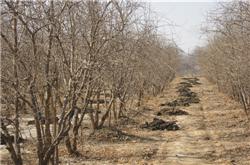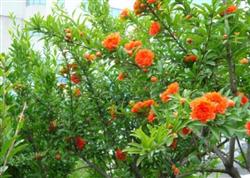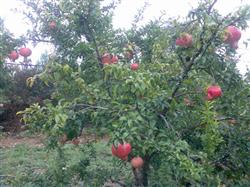Key techniques of soil cultivation and management of guava

(1) interplanting guava can be used as a tree species for interplanting tall fruit trees, but it is more likely to be planted in succession. In order to make full use of land and light energy, increase the effect of soil and water conservation on sloping land, optimize the ecological environment and increase income, we can interplant shorter-term fruits such as pineapple, papaya, watermelon and melon, as well as legumes, vegetables and other short-term crops. There should be a certain distance between the crops and the guava, so as not to grab the fertilizer and water. The crops should be fertilized and managed, and harvested in time, and the branches and leaves should be covered with tree plates or buried as fertilizers. (2) at present, there are few studies on the nutritional requirements of guava, and the criteria for guiding fertilization according to leaf analysis have not been determined. Therefore, to a large extent, fertilization of guava is based on production experiments. Although guava can grow, blossom and bear fruit in thin land, it has a good response to fertilization and shows strong fertilizer tolerance. The results of foreign experiments on different ratios of three elements of 3-year-old guava fertilizer showed that the annual yield of 260g of nitrogen, 160g of phosphorus and 260g of potassium per plant was the highest (48.2kg per plant). The single fruit of the group of 260g N, 260g P and 320g K per year was the heaviest (177.4 g), which indicated that the effect of increasing yield was good with the increase of nitrogen ratio, and the fruit was increased by more phosphorus and potassium. The experiment also shows that potassium can increase the total solids, while more nitrogen can decrease the total solids. In South Africa, 60 grams of nitrogen is applied to adult guava plants after pruning, 250 grams of nitrogen, 100 grams of phosphorus and 500 grams of potassium are applied before flowering in spring, and 60 grams of nitrogen is applied again during fruit expansion. It is considered that excessive nitrogen application will lead to fruit cracking. As guava can blossom and bear fruit all the year round, fertilization should be decided according to which flower is cultivated. The medium-maturing and late-maturing varieties are mainly cultivated in Guangzhou, so fertilization is mainly applied before spring sprouting, during fruit development and after fruit harvest, and for early-maturing varieties with turning flowers and fruits, they are applied once respectively after harvest. In Guangxi, applying shoot-promoting fertilizer in early February, flower-promoting fertilizer in March, strong fruit and secondary fruit branch germination fertilizer in May, second fruit fertilizer in July, secondary fruit fertilizer from September to October, winter heavy fertilizer in December, more times and large amount of fertilizer were applied in Guangxi. In Taiwan, guava is mostly cultivated by adjusting the yield period, reducing summer and autumn fruit, increasing winter and spring fruit, and fertilizing according to soil fertility. It is generally fertilized once in February, May, July, August and November, and once a month in barren land. Fertilization in August and November plays an important role in promoting the development and quality of winter and spring fruits. In addition, more nitrogen fertilizer was applied to adult trees, and extra-root topdressing was applied many times. Guava responded well to extra-root topdressing. Five-year-old guava was fertilized with urea 1%, 2%, 3%, calcium superphosphate 1% and potassium chloride 1% alone or in combination. It was found that the branch growth and fruit yield of each treatment were higher than those of the control. among them, the mixed spraying effect of 3% urea, 1% calcium superphosphate and 1% potassium chloride was the best, and the number of branches and leaves was the most and the longest. The fruit setting rate (62.0%), fruit yield (30.5%) and yield (28.4 kg per plant) were the highest. Spraying different concentrations of urea, calcium superphosphate and gibberellin (920) at the beginning of July could generally improve the quality of winter fruit, 2% and 4% urea increased vitamin C and pectin content, 0.01% gibberellin increased vitamin C content, and 2% calcium superphosphate increased total solids, reducing sugar, non-reducing sugar and pectin content. In addition, spraying 0.5% or 1% zinc at full bloom can reduce preharvest fruit drop and increase fruit setting rate and yield; spraying 0.4% zinc, 0.2% boron and 0.005% molybdenum in January, February, March and July, August and September has a good effect on improving the quality of summer and winter fruits. Taiwan sprays 0.4% potassium dihydrogen phosphate every 5 days from September to October, three times in a row, which can improve the quality of winter and spring fruits. The poor quality of winter and spring fruits of guava in mainland China is not only related to low temperature and drought, but also related to fertilization and nutrient supply. (3) although the water supply of guava is resistant to drought and humidity, although there is more rainfall in South China, the wet season is obvious in dry season, and the rainfall may not meet the water requirements of guava in different phenological periods. Therefore, it is necessary to pay attention to drainage in the rainy season, especially irrigation in the dry season, especially to cultivate water supply for winter and spring fruits. In the dry season after mid-late September, irrigation should be made every 10 to 15 days according to the dry and wet condition of the soil, so as to ensure good plant growth and fruit development. The sandy soil and gravelly soil with poor water retention should be irrigated throughout the garden and covered with tree plates.
- Prev

How to prune a pomegranate tree that blossoms but does not bear fruit
In the first year after planting, 3-5 branches were selected as the trunk during winter shearing, and the rest of the tillers were removed. High-quality large fruit pomegranate trees are mainly pruned in winter and spring, and their roots and tillers must be removed every time they are trimmed, and the fruit stalks that hung fruit last year must also be removed. The drooping branches, dead branches and horizontal branchlets inside the crown should also be thinned so that the crown.
- Next

Transformation technology of low-yield pomegranate orchard
First, strengthen the management of soil, fertilizer and water in summer. After raking flat, cover the tree plate with 20 cm thick grass or wheat straw, press a small amount of soil on it, and turn it on the spot in the early spring of the following year. After harvest to early winter, using strip ditch method to apply base fertilizer, ditch depth 30cm 35 cm, mu application of high-quality farm fertilizer 3000 kg, calcium superphosphate 3 kg, ternary compound.
Related
- Moge, come on! The staff of the peasant association in the producing area of cantaloupe were frightened when the crowd gathered.
- Causes and Solutions of low Fruit setting rate of Apple
- Symptoms and control measures of passion fruit virus disease
- Fruit growing lesson: how do apple orchards keep high yields?
- Can you build orchards in the mountains? What are the pros and cons?
- How to manage the coloring period of Crisson grape?
- This paper introduces the processing technology of two kinds of fig products.
- How much is a month for retired teachers in rural areas by 2020?
- How can strawberry planting increase sugar content? We should pay attention to management in many aspects.
- What are the cultivation techniques on how to improve the yield of golden fruit?

